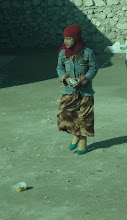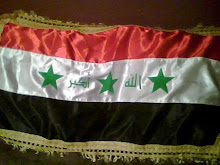Tuesday, April 28, 2009
Friday, April 24, 2009
Thursday, April 23, 2009
Safety of the Veil

After reading many accounts of women all across the world who wore a veil and who were oppressed by it, I wondered if all felt this way. What I found was a lot of articles that talked about how women felt safe, and even liberated wearing the veil. They had no problem with the tradition of wearing a veil to safe guard their chastity. What is it that makes them feel safe with a cover?
First of all, when they wear the veil, they blend in with those around them. Most don’t desire to call any attention to themselves. They essentially become invisible to those around them. There is something comforting about not drawing extra attention to you or your family. In the Middle East in many traditional areas, if a woman brings dishonor to a family it is the ultimate in shame. It is considered the duty of all the men in that family to murder her so they can restore honor to the family. I guess it is a cultural thing, but I still don’t understand why murdering a woman restores honor to your family. In Iraq, from 1991 to 2003, there were over 4,000 ‘honor killings’ reported. [Talk about a misnomer, honor killings?? By murdering your daughter or wife you restore ‘honor.’] That’s nearly one a day for 12 years. And those are the ones that were recorded.
I know it is still a worry for many women. When I was in Iraq, a car bomb went off in a market place in Ramadi. They started bringing in Iraqis into our Combat Hospital. They brought in men, women, and children of all ages. One woman who they brought in was bleeding badly from shrapnel wounds to the length of her body. She was in pain, but refused to let any man touch her. She was yelling loudly in Arabic, and the interpreters convinced us to put her in her own curtained off area, where only female medics could see her or attended to her. She obviously was quite afraid of what people would say if they found out that American men had touched her. Even when we only would have touched her to save her life.
Most followers say that Islamic dress is “their...freely adopted symbol of identification with a religious system in which they wish to express a deep commitment and allegiance.” I agree that the majority of women probably have no problem wearing the veil. It is to them, a symbol of devotion. They feel that they are showing their modesty and it is the right thing to do. I do feel they should be allowed to dress how they wish, with out fearing being murdered by others who disagree. But, maybe I expect to much…
Wednesday, April 22, 2009
What does your Agal say about you?

.
You’ve probably seen them. In any Middle Eastern video, there is an Arab whose head has a towel looking thing wrapped around it. You may have wondered why they would go around in the desert with a towel on their head. I had the same question when I was in Iraq.
I found that the traditional dress for Bedouin men includes a head-dress called a Ghutra, which keeps the sun off of their head, and can be pulled over their face in a sand storm. Ghutras come in several different colors. A checkered red-and-white pattern means patriotism, and is often worn by people under a monarch. Another design is checkered black-and-white, which symbolizes freedom, and is often worn by people under a president. A common color worn in summer is white, and symbolizes purity. A black turban means they are a descendant of Mohammad. On top of the Ghutra is a band called an agal. I found the history of the agal very interesting. To me it just looked like a black band that kept their towel from blowing away, but it has a long history. Bedouins anciently carried the black bands on their heads to use as a whip, or in case ropes were needed to secure their camels. When there were no trees to tie the camel up, they wrapped their agal around one of the camels legs while it was sitting, preventing it from standing up.
Much of Iraq is very tribal still. In these regions when a tribal leader dies, the relative who succeeds him has the late man's agal set on top of his head like a crown to mark the transition. To grieve, men of the tribe place their agals down to their eyebrows like a flag at half-staff. In some areas when a boy reaches puberty they are taught how to wear the ghutra and agal by their father. It is like a right of passage. In other areas, when a boy turns 18, his tribe crowns him with an agal as a rite of passage.
Some take the symbolism of the agal very seriously. If an agal is knocked off a man's head, it can ignite a war among tribes. If a relative is killed, family members will remove their headbands until they take revenge. If a woman has an affair, the men in her clan will not wear the agal until they have murdered her and in their minds restored honor. (Who would say Islam was a violent religion?) Sometimes, a father will beat a disobedient child with his agal rather than a belt.
So, next time you’re in the Middle East and see a guy with a towel on his head, you now know what it means. Also, a voice of warning: please, please, don’t knock his agal off his head.
Subscribe to:
Comments (Atom)









